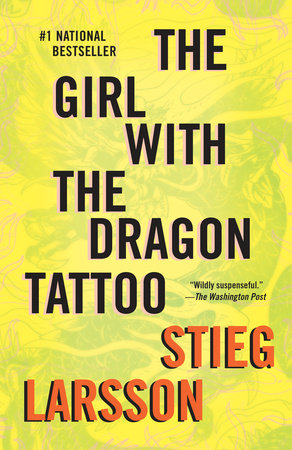The Girl with the Dragon Tattoo Reader’s Guide
By Stieg Larsson


1. Who do you consider the novel’s protagonist, Lisbeth or Mikael? Why?
2. What point was Larsson trying to make with the themes running through this novel? How do issues such as violence against women, journalistic integrity, and more general notions of trust tie in with each other throughout the book?
3. What function do the sex-crime statistics on each section’s title page serve?
4. Reread the passage from Mikael’s book on page 103. What is its significance in terms of the plot?
5. On page 156, Henrik tells Mikael, "If there’s one thing I’ve learned, it’s never engage in a fight you’re sure to lose. On the other hand, never let anyone who has insulted you get away with it. Bide your time and strike back when you’re in a position of strength—even if you no longer need to strike back." Over the course of the novel, who puts this advice to the best use? How, and why?
6. How does the involvement of several Vanger brothers with Swedish fascist groups cloud Mikael’s investigation into Harriet’s disappearance? What role does Harald play?
7. Why does Henrik become an investor in Millennium? Does his plan succeed?
8. Discuss the character of Lisbeth. Some think she is a "perfect victim" (p. 409), others find her intimidating, and Mikael wonders if she has Asperger’s, but the reader is allowed to see exactly how her mind works. How do you see her? How do you think she sees herself?
9. What do you think about the way Lisbeth turns the tables on Bjurman? Is it admirable, or a sign that she’s unstable?
10. On page 254, Lisbeth says her new tattoo is "a reminder." Of what?
11. Several times in the novel, Mikael’s journalistic ethics are challenged. Do you consider him to be ethical? In your opinion, is anyone in the novel truly honorable? If so, why?
12. After reserving judgment for most of his investigation, Mikael determines that Harriet was, in fact, murdered and that he’s hunting for a killer. What prompts this decision? How does this affect the rest of his investigation?
13. Discuss the role of parents in the novel. Who is a good parent, and why? How might Harriet’s story have changed if her mother had behaved differently? What about Lisbeth’s? Is Mikael a good father?
14. Blackmail is used several times in the novel, for different ends. Who uses it most effectively, and why?
15. On page 507, Mikael tells Lisbeth that to him, friendship requires mutual respect and trust. By those standards, who in this novel is a good friend? Is Mikael? What about Anita?
16. Discuss Henrik’s request that Mikael never publish the Vanger story. Is it a reasonable request? Does Mikael’s acquiescence change your opinion of him? Do Lisbeth’s demands mitigate his ethical breach?
17. What ultimately drives Lisbeth to take action against Wennerström on her own? Does she go too far?
18. Reread Mikael’s statement about the media’s responsibility at the top of page 575. Can you think of a situation in the American media that is analogous to the Wennerström affair?
19. Discuss the ending. Was it satisfying to you? Why or why not?
Just for joining you’ll get personalized recommendations on your dashboard daily and features only for members.
Find Out More Join Now Sign In